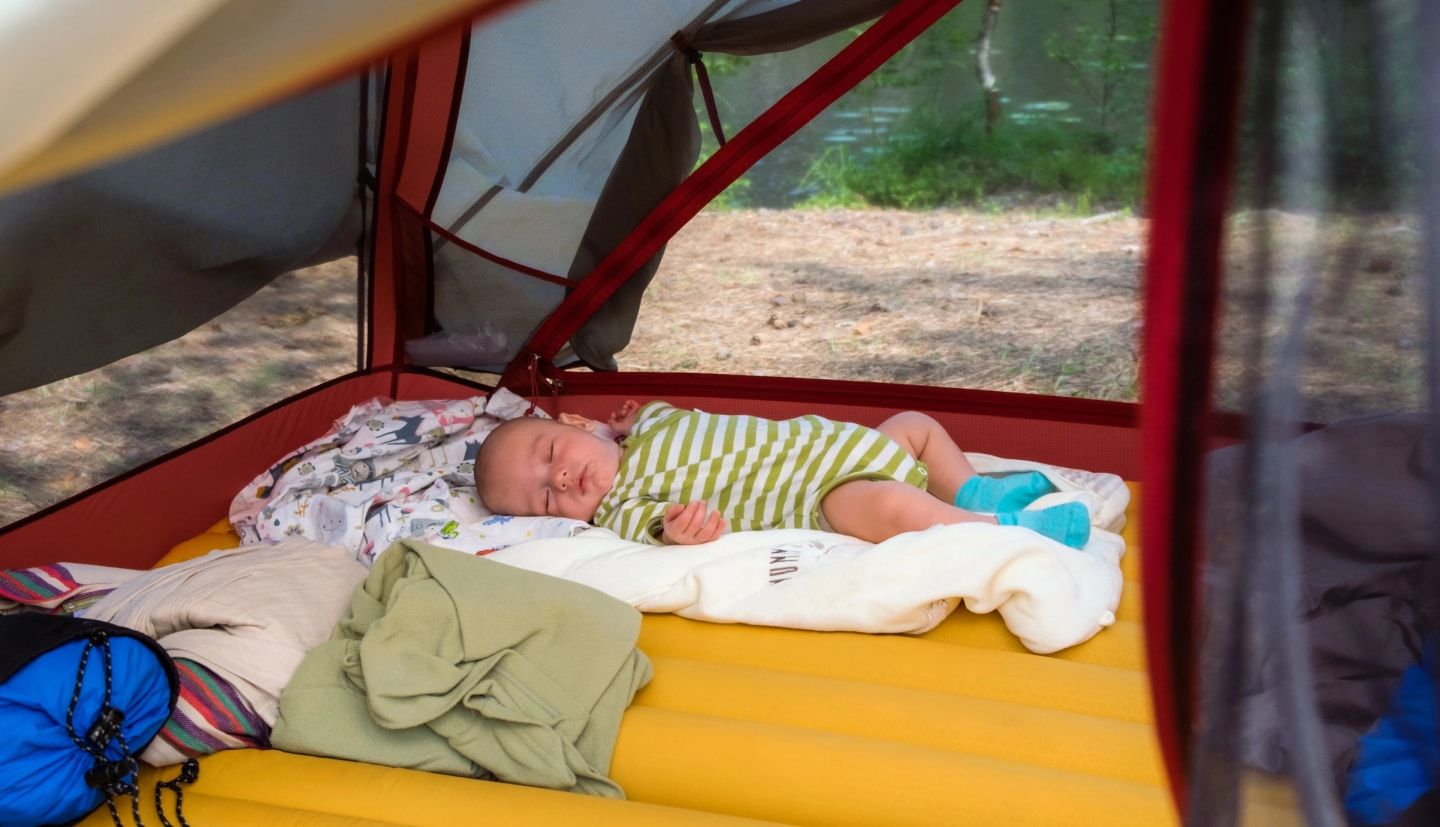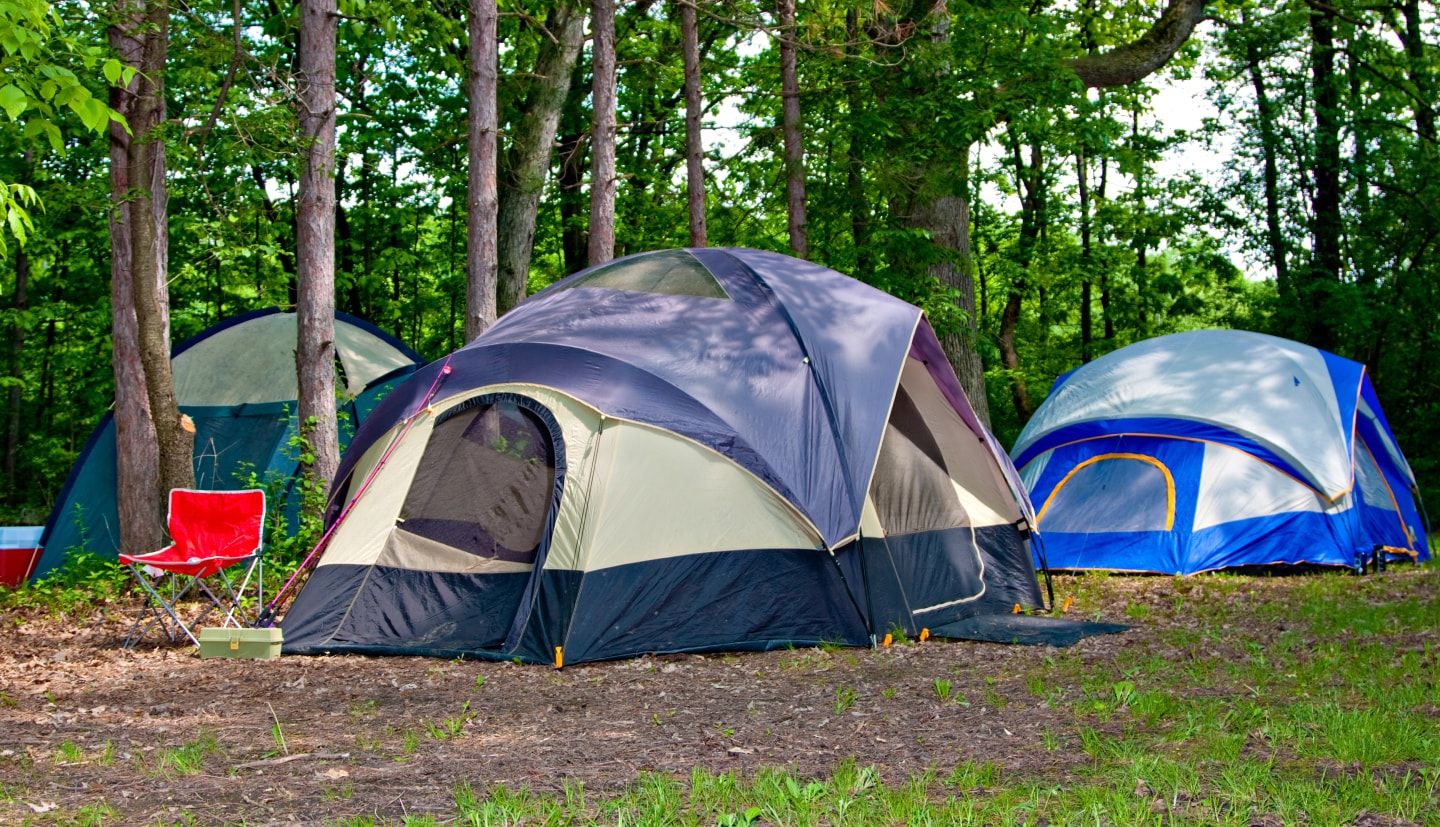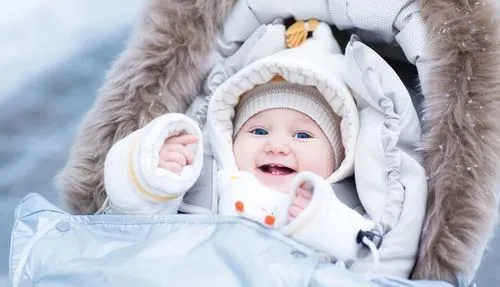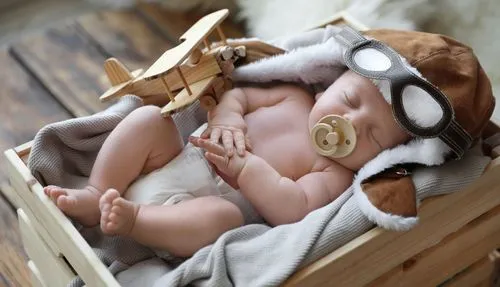Camping with a baby in a tent
August 07, 2025
Katka

Camping with a baby lets your family share the magic of the outdoors from day one. Fresh air, starry skies, and unplugged quality time create memories you’ll cherish forever. But babies bring their own set of needs: diapers, feeding schedules, weather swings and safety considerations all demand extra planning. This all-in-one guide walks you through everything—timing and safety, gear essentials, tent setup, car camping, daily routines, sleep strategies, and quick hacks—so you can tackle your first family adventure with confidence.
When can I start camping with my baby
Most experts agree that once your infant reaches about four months—having completed initial immunizations, gained neck control, and established a feeding schedule—you’re ready for a short overnight in the woods. Asking “How soon can I go camping with a baby?” often leads to that four- to six-month window, when babies tolerate cooler nights and nap more predictably. Always confirm longer trips with your pediatrician, especially if your child was premature or has health issues.
Is it safe to go camping with a baby?
Heading into the great outdoors with your little one can feel both exciting and a bit nerve-wracking. It’s natural to worry about temperature changes, bugs, or first-aid emergencies—but you don’t have to be overly fearful. With thoughtful planning and a calm mindset, camping with a baby can be as safe as it is rewarding. Think of safety prep as your peace-of-mind toolkit: the more you check off in advance, the more you’ll relax and enjoy the fresh air, starry skies, and quality family time.
Safety preparation
Before you leave home, run through this checklist:
- Vaccinations up to date: Ensure routine shots are current.
- First-aid kit: Include baby-specific items—thermometer, infant acetaminophen, bandages. Check whole list in article Travel first aid kit for kids.
- Weather planning: Check forecasts and pack for layers.
- Sun & insect protection: Baby-safe sunscreen (for 6+ months), lightweight hats, and EPA-approved insect repellent.
- Emergency plan: Identify the nearest medical facility and cell coverage.
- Hydration & nutrition: Carry extra clean water for bottles and snacks for yourself—hunger and thirst can sneak up on you both.
What to take camping with a baby
When you’re planning your first outdoor trip, start with the non-negotiables—you won’t get far without these camping with a baby checklist items:
Must-bring essentials for baby
- Diapers & wipes
- Portable changing pad – Waterproof and foldable.
- Feeding supplies
- Layered clothing
- Baby-sized sleeping bag – Rated at least 10 °F (6 °C) below the expected nighttime low to keep your little one snug.
- Infant mattress or foam pad
- Hot-water bottle or emergency heat pack – Fill a small thermos-style hot-water bottle before bed.
- Blankets & swaddles – For shade, extra warmth at night, or a play mat on the ground.
- First-aid kit
- Water supply – Plan for at least 2 L of drinking water per adult per day plus extra for formula or cleaning—more if your site lacks reliable faucets.
- Trash & diaper bags – Heavy-duty, sealable to contain odors and mess.
Best gear for camping with baby
Once your baby essentials are covered, focus on the best gear for camping with baby items for comfort and convenience:
- Waterproof tent (rainfly + fully sealed seams)
- Portable stove/camp cooker – A lightweight backpacking stove lets you boil water for bottles, rehydrate pouch food, or warm up formula; don’t forget fuel canisters.
- Baby carrier (Wrap or Soft-Structured) – Keeps baby close and your hands free while hiking camp loops.
- Compact stroller – Small fold, off-road wheels for gravel paths or grassy sites.
- Waterproof play mat – Delineates a clean play area inside your tent or under a tree.
- White-noise machine or app – To drown out unfamiliar outdoor sounds.

Choosing and setting up your tent
Best tent for camping with baby
A family-friendly tent boosts comfort and safety. Aim for at least a 4-person tent. Taller ceilings let you stand comfortably. Multiple doors or vests provide cross-ventilation and quick exits. Built-in vestibule keeps muddy shoes out of the main area. Darkened fabric helps your baby nap during bright afternoons.
How to choose a place for a tent
1. Pitch near your car: Park within sight of your tent. You’ll carry the Camping With A Baby Checklist items—diapers, bottles, blankets—far fewer steps.
2. Find flat, dry ground: Walk the site barefoot. It should feel firm and even. Clear away rocks, roots, and ant hills so your baby’s pack-and-play sits steady.
3. Avoid low spots: Look for little dips where rainwater pools. Even small puddles under your tent can make nights cold and damp.
4. Balance sun and shade: Face your tent east so morning sun dries dew and warms the tent. Use trees or a canopy on the west side for afternoon shade and cool naps.
5. Book an electric pitch: If you need to warm bottles or run a baby monitor, choose a spot with a power hookup.
6. Stay near water and toilets: Aim for 50–100 m from clean taps and family toilets. Close enough for quick trips, but far enough to avoid noise.
7. Wind block: Position tent entrance away from prevailing wind.
Set up a baby corner
Lay a thick foam pad or tarp. Add a plush blanket or air mattress beneath the crib. Create a storage zone - hang mesh organizers or cubbies to hold diapers, wipes, and toys off the ground.

How to choose a campsite when camping with a baby
Everyone may have a different idea of a campsite, but the important thing when camping with a baby is that the campsite fulfills a few basic things. Clean sanitary facilities, a child-friendly campsite, a campsite where you can rest at night, availability of drinking water and electricity, a shop within a reasonable distance.
It is advisable not to go too far for first camping. A site within one hour’s drive means less fuss in the car and a quick return if you forget something.
Sleeping with baby while camping
Maintaining home routines under unfamiliar skies is key.
1. Stick to your home schedule: Aim for your usual bedtime, say 7 PM, even if the campfire’s still glowing.
2. White noise: A portable white-noise machine or smartphone app mutes crickets and distant chatter.
3. Warm, safe sleepwear: Use an infant sleeping bag rated 10 °F below the expected low.
4. Soft lighting: A red-hued LED nightlight preserves night vision during middle-of-the-night feedings.
Additional hack:
5. Remote monitoring: The Bibino Baby Monitor with long-range transmission, low-light vision, and motion & noise detection lets you prep dinner or stoke the fire while keeping your eyes on the baby.

Tent vs. caravan camping with baby
Choosing between pitching a tent or bringing along a caravan fundamentally shapes your family’s outdoor experience. Tent camping immerses young children in nature’s sights and sounds—think morning sunbeams through mesh walls and the patter of rain on a nylon rainfly. It’s budget-friendly, flexible (you can camp almost anywhere), and straightforward to pack up. Yet thin tent walls transmit every breeze and drop in temperature, living quarters can feel cramped with gear and little ones, and you’ll carry all cooking, diapering, and toileting kit separately.
”Camping with a baby in a tent takes more gear and planning, but the payoff is immense.”
By contrast, camping with a baby in a caravan offers a weather-proof cocoon: hard walls, built-in climate control, and a fixed sleep area that stays set up no matter how many campgrounds you visit. On-board kitchens and bathrooms make nighttime diaper changes and bottle-warming effortless, while cupboards and drawers neatly stash diapers, clothes, and toys. However, caravans demand a higher upfront investment, can’t squeeze into every campsite (and often incur extra fees for pull-through spots), and require towing skills plus added fuel costs. For more information, read the article Camping with a baby in a caravan or RV.
If you value pure back-to-basics immersion and minimal gear investment, tent camping is your playground. If home-style comforts, reliable sleep routines, and simplified meal prep are non-negotiable, a caravan (or RV) is worth the extra cost and effort.
Frequently asked questions
1. At what age can a baby sleep in a tent?
Most experts recommend starting around 4–6 months, when your baby has a more predictable routine and can handle cooler nights.
2. How should I dress my baby for sleeping in a tent?
Dress your baby in layers and use an infant sleeping bag with the right temperature rating. Avoid loose blankets, which are not safe.
3. How can I keep my baby warm at night while camping?
Use an insulated pad or travel mattress, a baby sleeping bag, and add a hat. In colder weather, a thermos with hot water can help warm bottles or provide extra heat.
4. What do I need to pack for camping with a baby?
Diapers, wipes, layered clothing, a first-aid kit, drinking water, and a baby monitor are must-haves. A baby carrier and waterproof play mat are also useful.
5. Is tent camping with a baby safe?
Yes, if you bring the right gear, check the weather, and choose a safe campsite. It’s best to stay close to your car and have an emergency plan.
Conclusion
Camping with a baby in a tent takes more gear and planning, but the payoff is immense: first giggles under dappled sunlight, peaceful naps to the sound of rustling leaves, and a newfound sense of family adventure. Follow these camping with a baby tips, pack according to our camping with a baby checklist, and choose the best tent for camping with baby—and you’re ready to make magical memories on your next outdoor getaway.
Now grab your gear, fire up the camp stove, and watch your baby discover the incredible world beyond your front door!
Continue reading...
Show all articlesCopyright & trademark notices
Apple, the Apple logo, and iPhone are trademarks of Apple Inc., registered in the U.S. and other countries and regions. App Store is a service mark of Apple Inc. Mac App Store is a service mark of Apple Inc. Google Play and the Google Play logo are trademarks of Google LLC. Windows® and the Windows logo are either registered trademarks or trademarks of Microsoft Corporation in the United States and/or other countries. Linux® is the registered trademark of Linus Torvalds in the U.S. and other countries.


